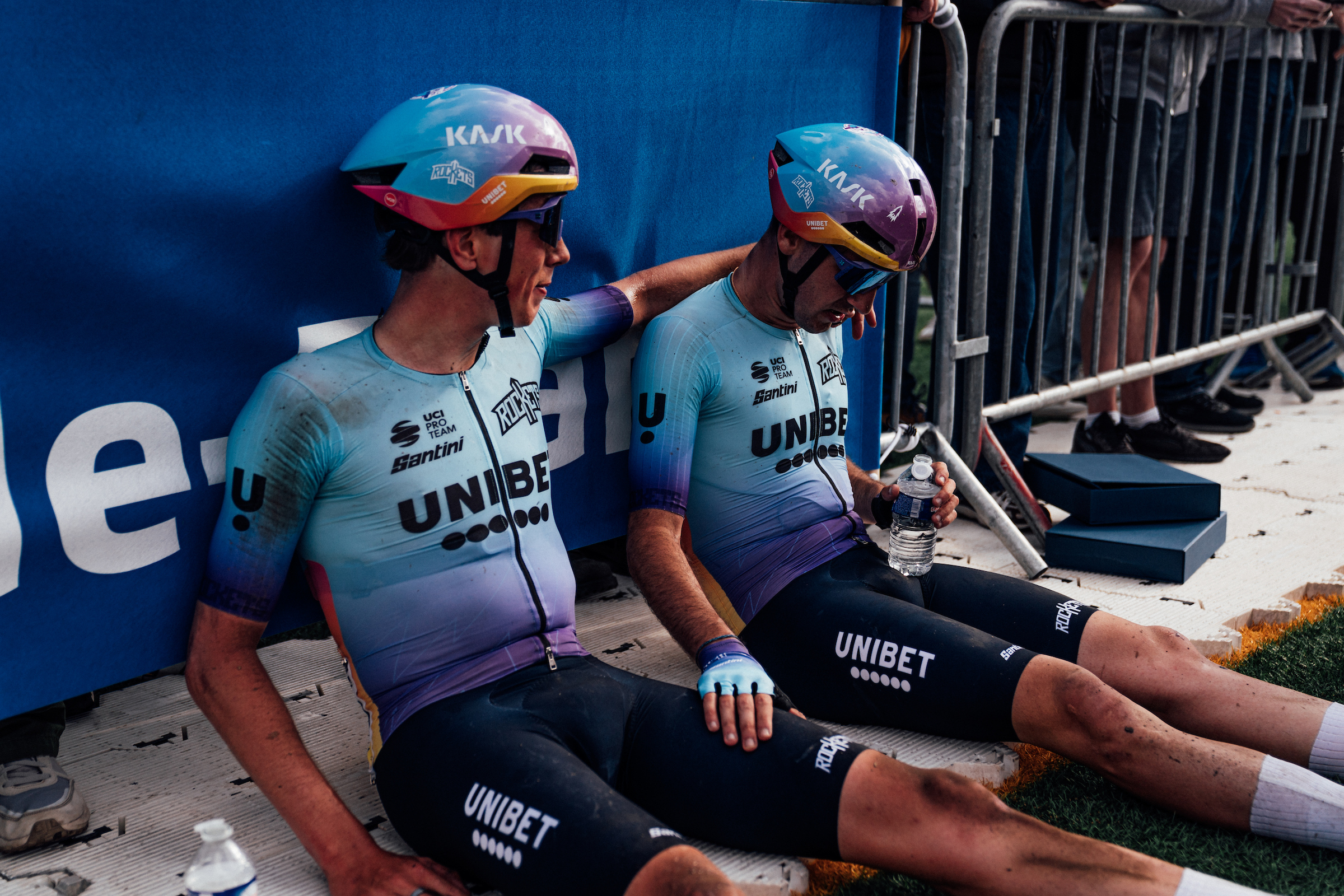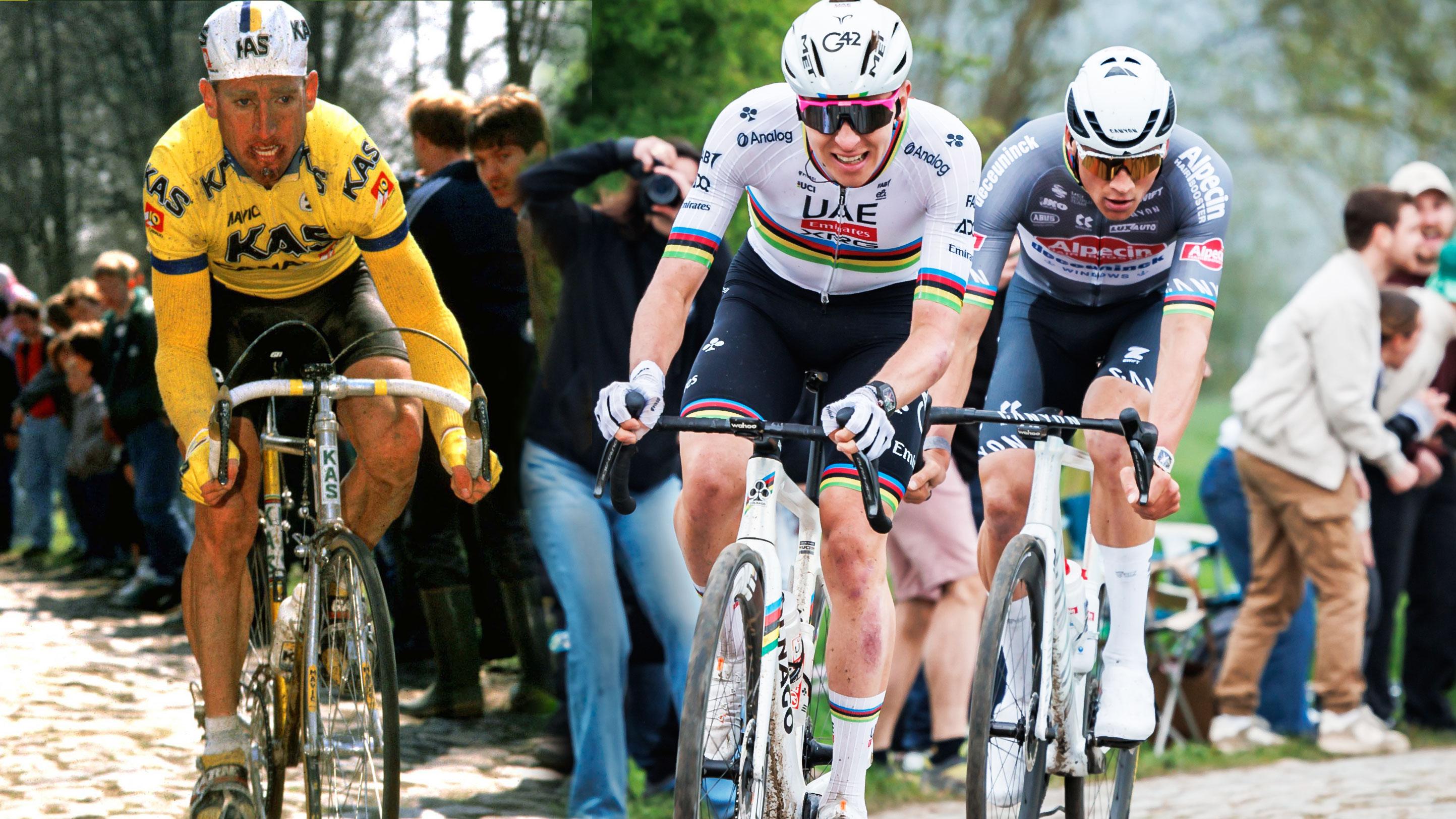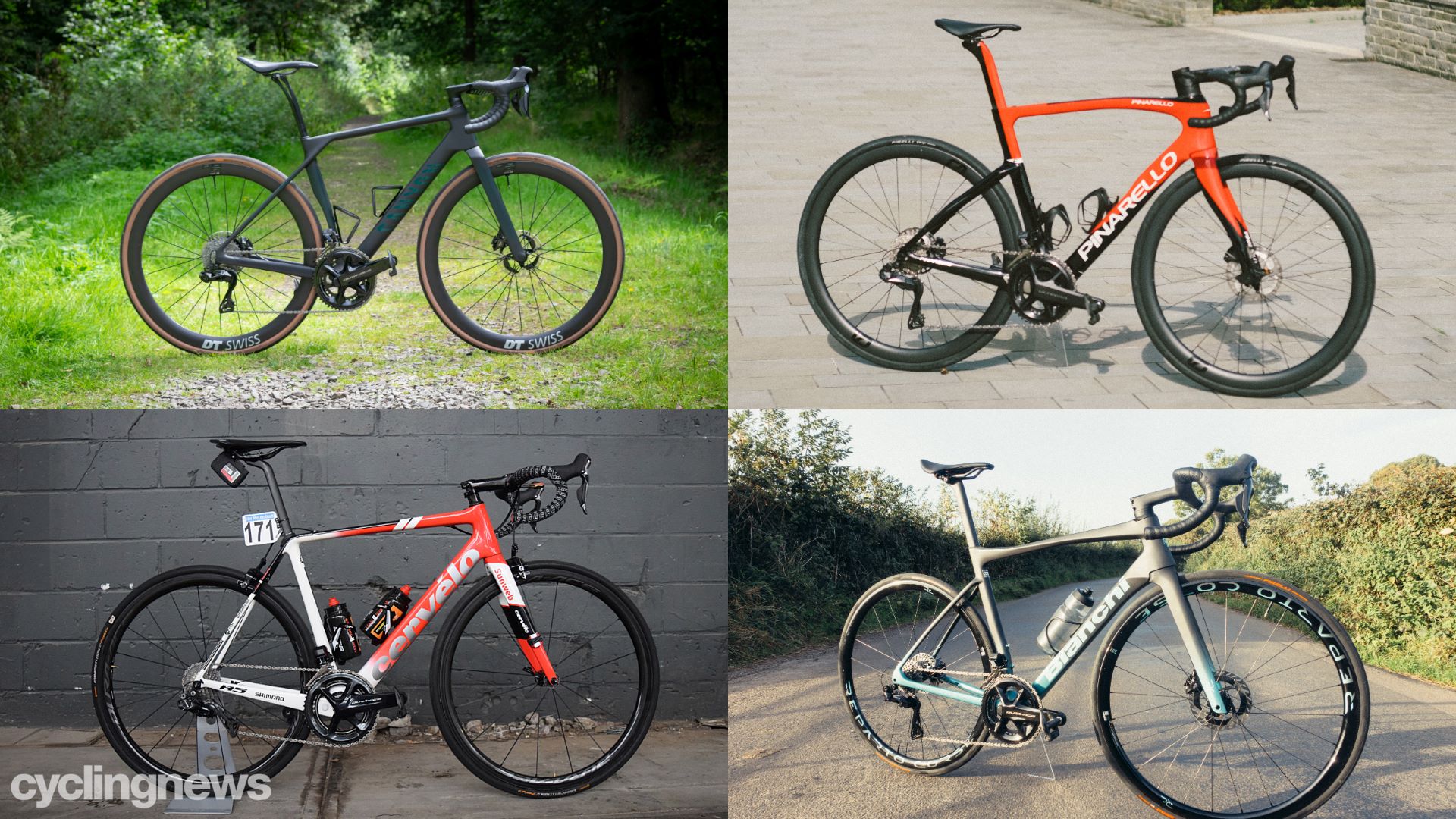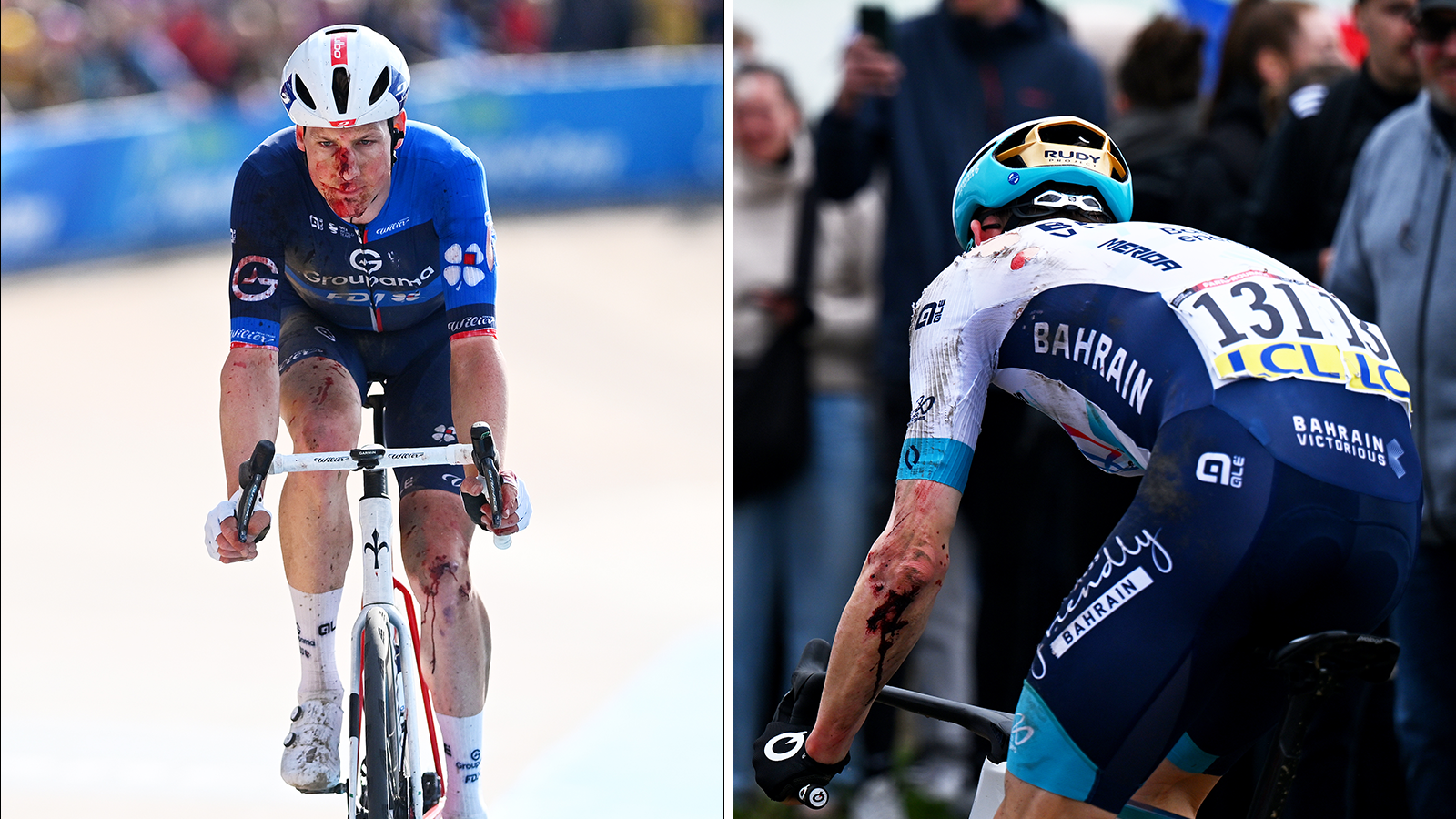Giro d'Italia Donne 2022 - The definitive guide to the route's key stages
Everything you need to know about the mountains, mid-range and sprint stages in the battle for the maglia rosa
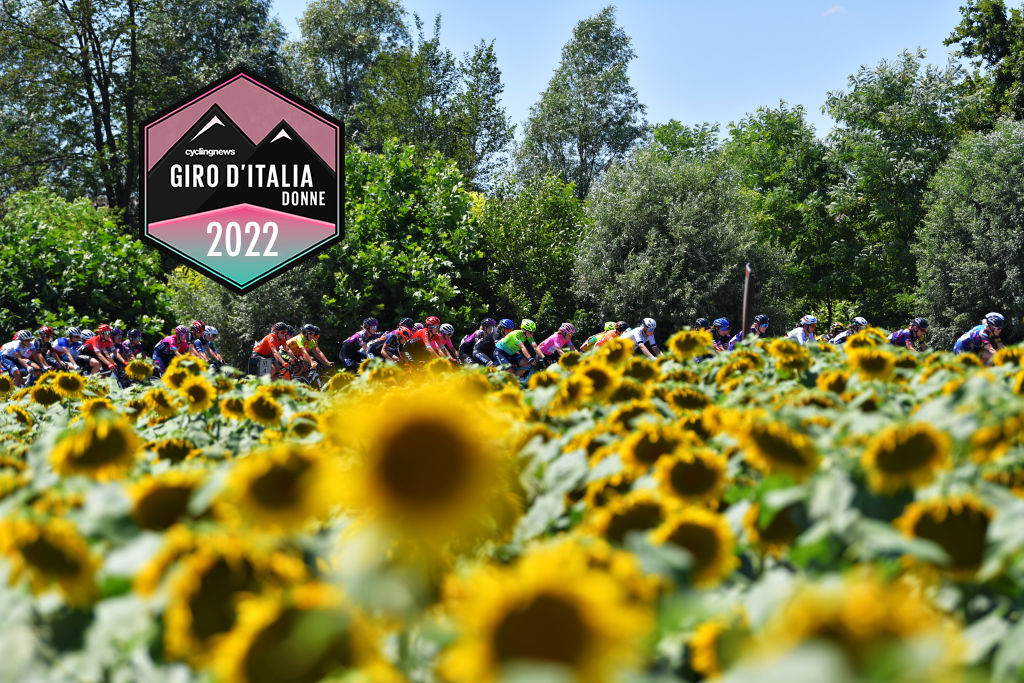
Starting with a three-day grande partenza in Sardinia, the 2022 Giro d'Italia Donne takes in a 10-stage, 11-day route from the southern island town of Cagliari to Padova in the north.
Across five regions of mainland Italy, the race features everything from a Classics-style day in Bergamo to a tough summit finish atop the Passo Maniva, with some sprint chances too before a big weekend of climbing to decide the general classification.
Overall victory in the race will go to a rider who can get through everything thrown at them during the Giro, but as the race plays out from Thursday June 30 to Sunday July 10 there are certain key stages which will prove decisive in the longest race of the season.
The GC deciders
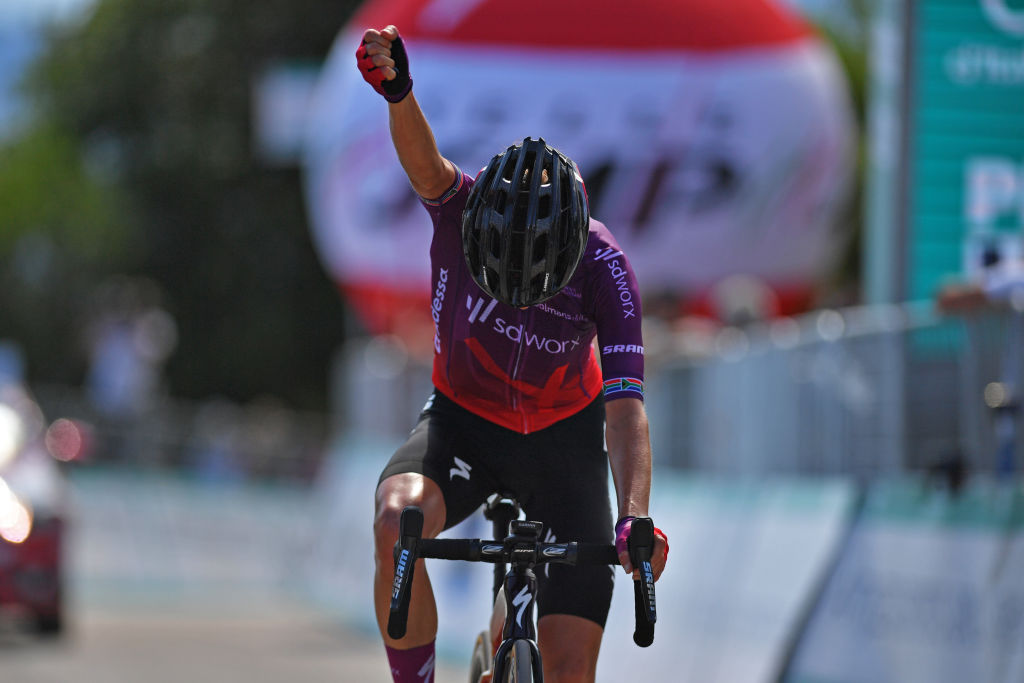
As is typical of a Grand Tour stage race, the Giro Donne will be decided in the mountains, with three big days of climbing in the latter part of the race ready to blow the general classification apart.
They’re all slightly different – the summit finish stands out as a Queen stage 7, but the steep climbs and long descents will be important too – and will each prove key to deciding who secures the maglia rosa come the finish.
Stage 7: Prevalle - Passo Maniva (112.9km)
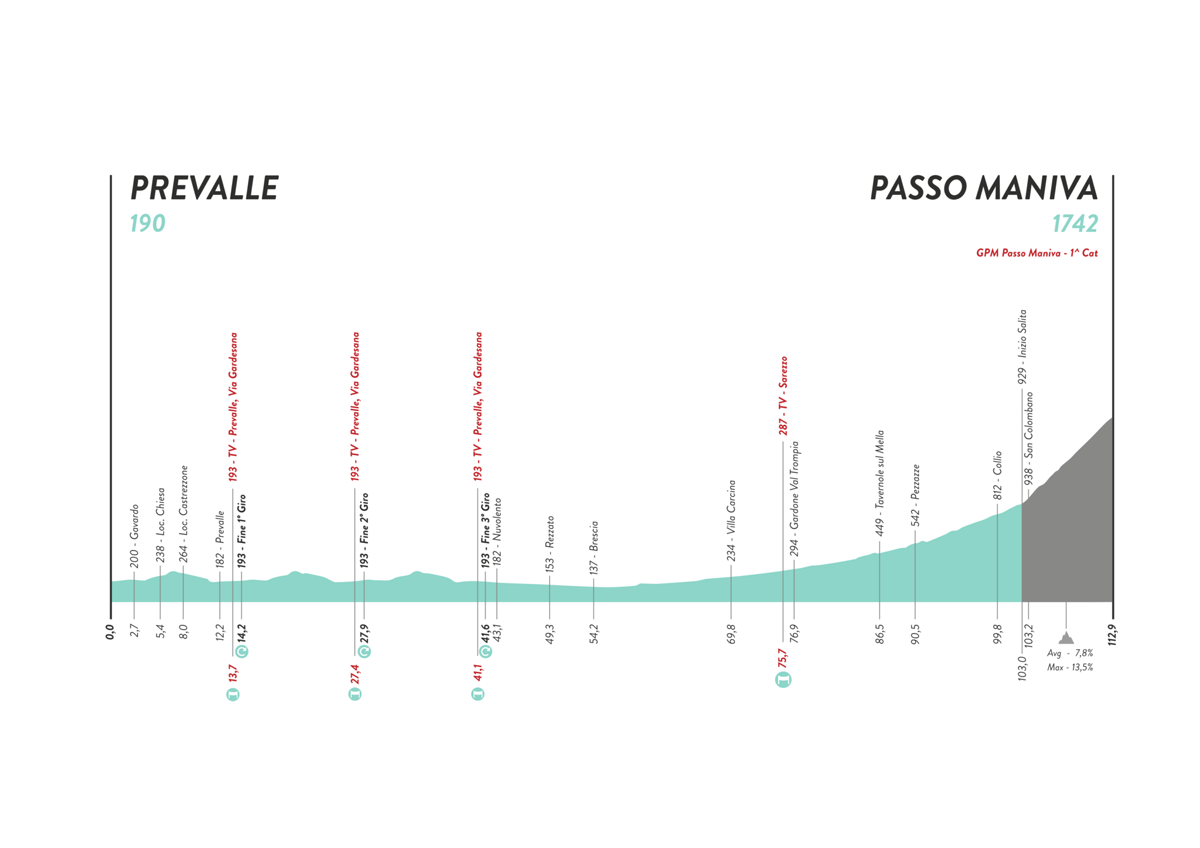
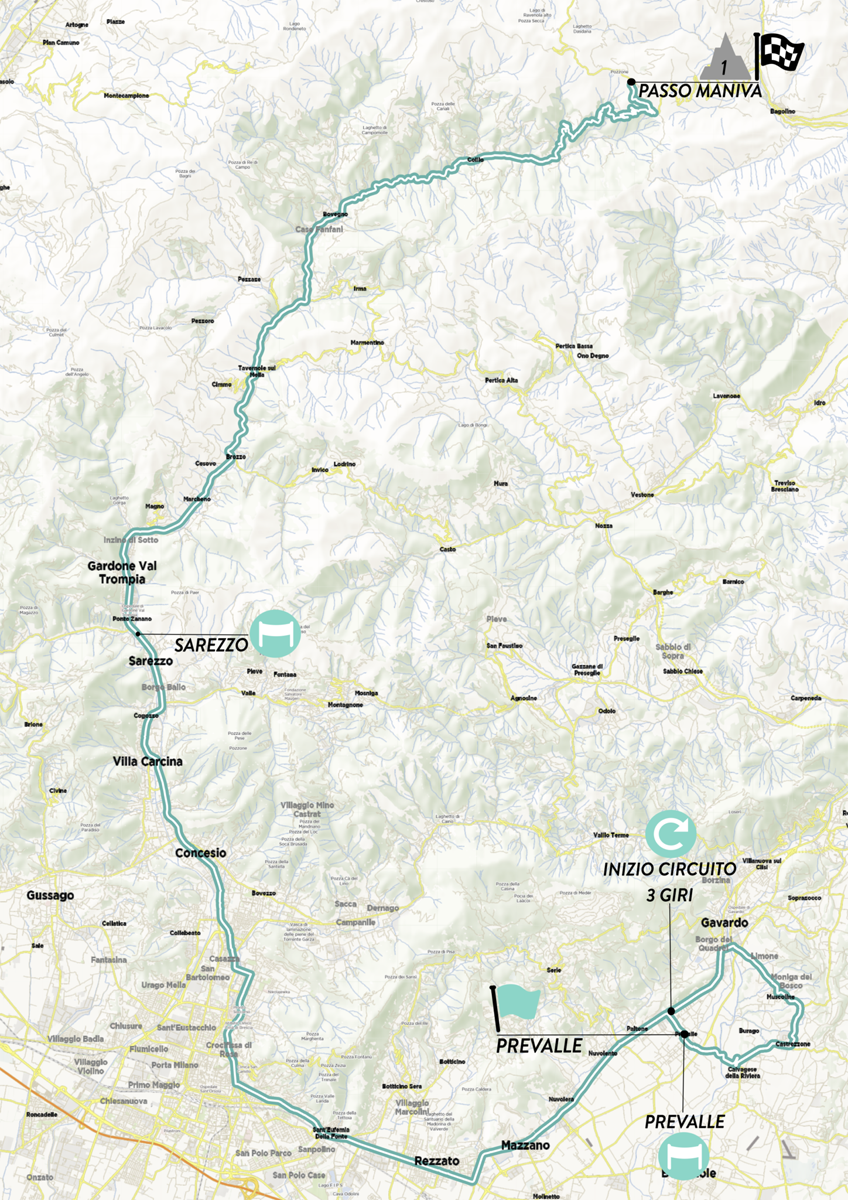
A triple-header of climbing days starts in dramatic fashion on stage 7, with a summit finish atop the Passo Maniva, which may prove to be the most important stage of the race. There may be a breakaway in the early part of the day, but expect stage 7 to culminate in a head to head between the GC riders as they look to take glory on the race’s only mountain-top finish, and reap the rewards of what could be some very big time gaps. With no descent, there’s nowhere to hide or bring back time, and it will all come down to the final climb.
Situated in a popular ski resort in Brescia, the Alpine climb tops out at 1,742m above sea level and is the highest point of the whole race. It’s a challenging ascent, averaging at 7.8% and with some ramps as steep as 13.5% – with the steepest sections coming towards the top – so it will suit the purest of the pure climbers. The first part of the stage is fleshed out with three 13.7km laps around Prevalle and Gavardo, before heading north to the mountain. The climb only officially starts at the 10km to go mark, but the road begins rising as early as 55km out from the finish, and it will be a long, hard fight to the top.
Stage 8: Rovereto - Aldeno (104.7km)
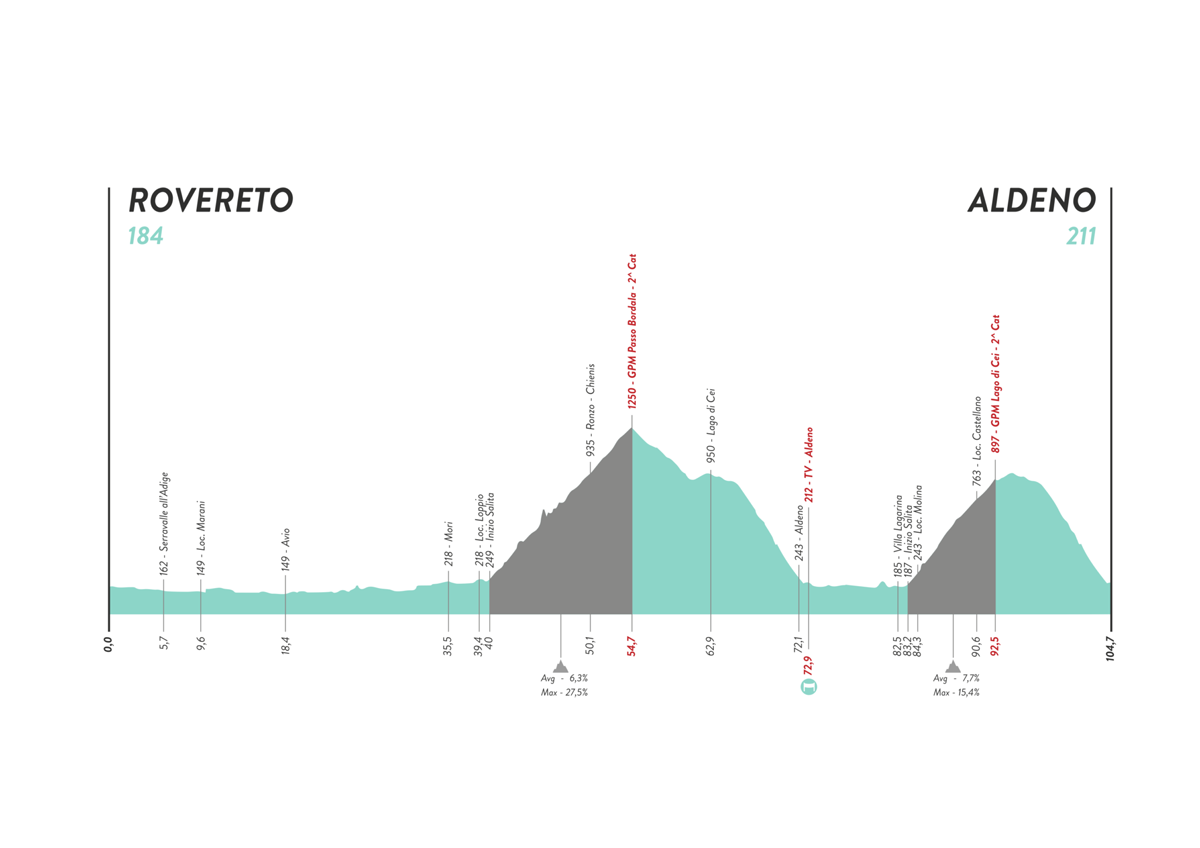
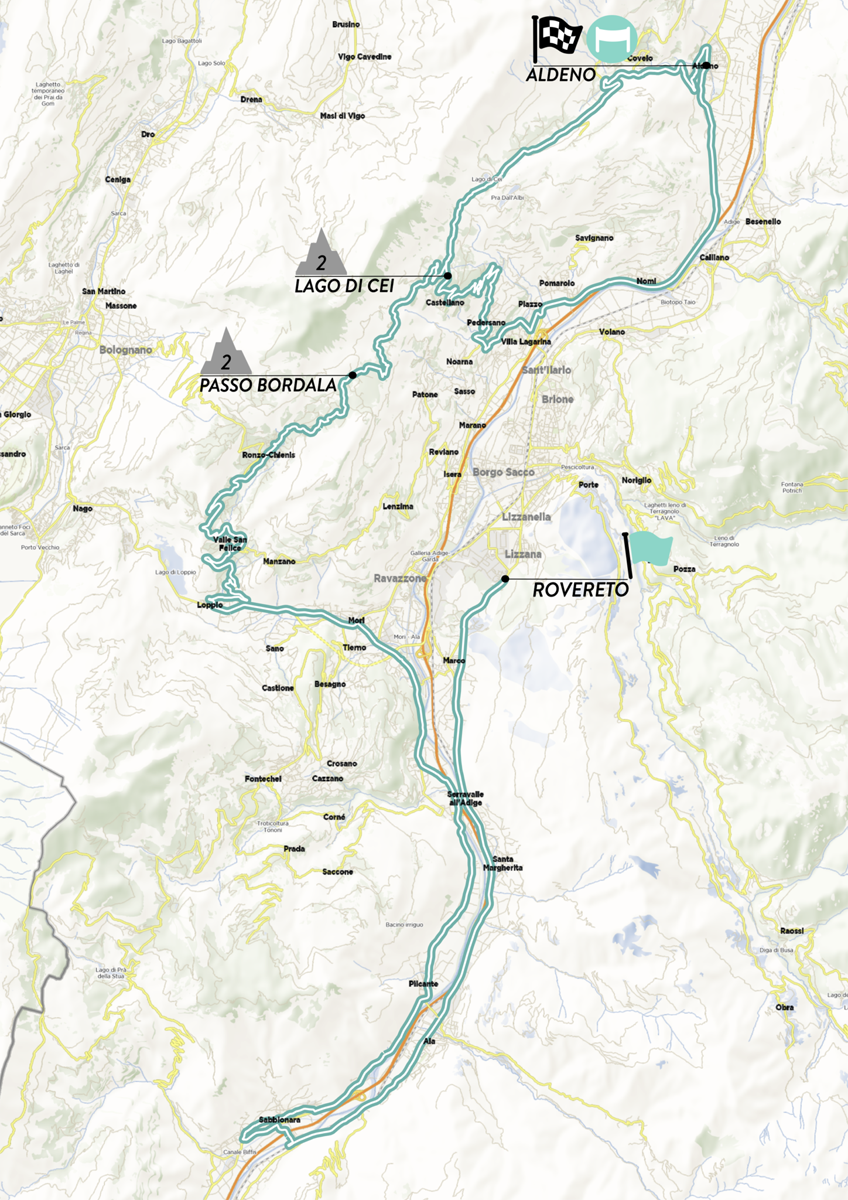
Stage 8 doesn’t finish on a summit but features two big climbs and over 2,000m of elevation gain on the route between Rovereto and Aldeno. The first climb, the Passo Bordala, is 14.7km long with some brutally steep sections, some reaching an almost unfathomable gradient of 27.5% before the summit at 1,250m.
After the Bordala climb, the peloton will descend to the Lago di Cei – which will be the summit of the second climb – go down to the valley road, pass the finish line in Aldeno, and then start climbing again, heading back up to the Lago di Cei. The 9km climb averages 7.7%, but features some tricky hairpins with steep corners. The peloton will then tackle the same 12km descent used earlier on in the stage, with only a short section of flat before the line in Aldeno. With so little flat and the challenges of catching someone on the descent, it’s likely the rider or riders who crest the second climb first – and can hold it together on the downhill – will be able to take it all the way to the finish. This stage might strike fear into the less confident descenders of the peloton, but at least they will get a practice go at the descent before the finale.
Stage 9: San Michele All’Adige - San Lorenzo Dorsino (112.8km)
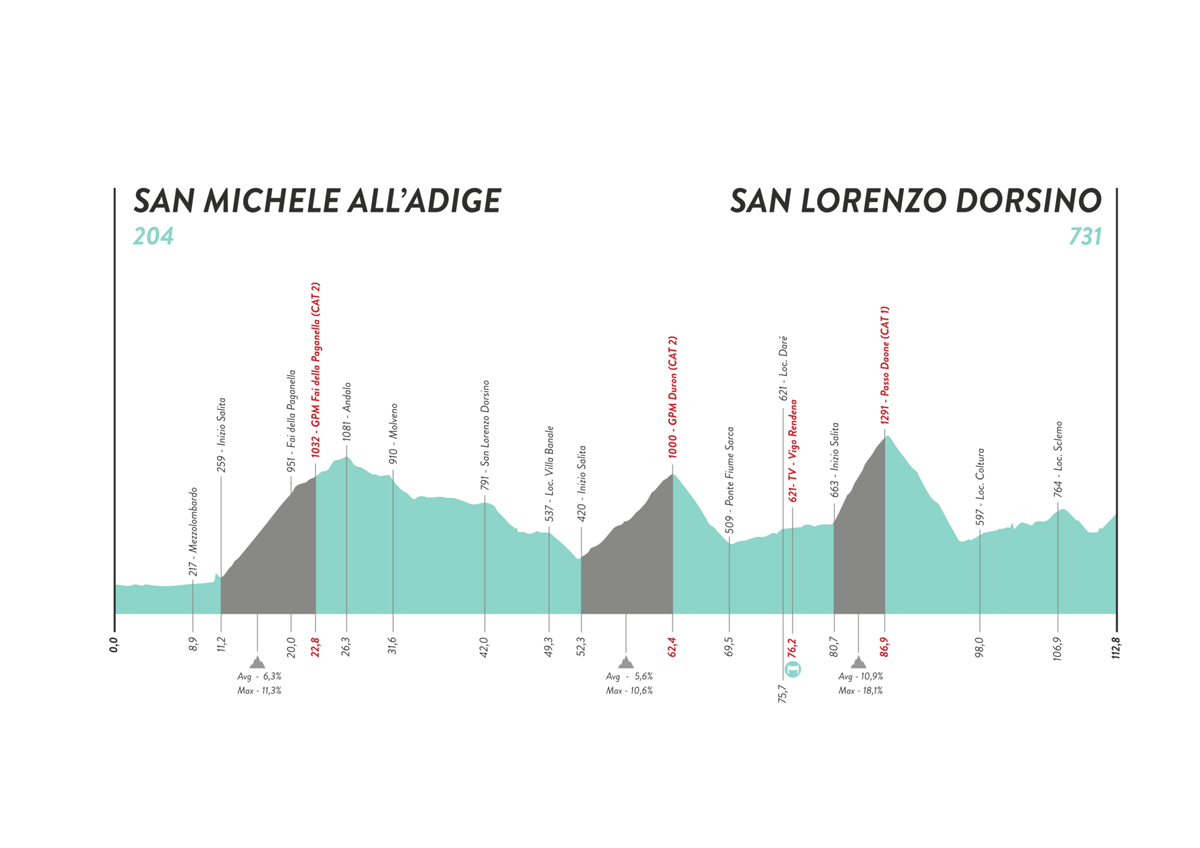
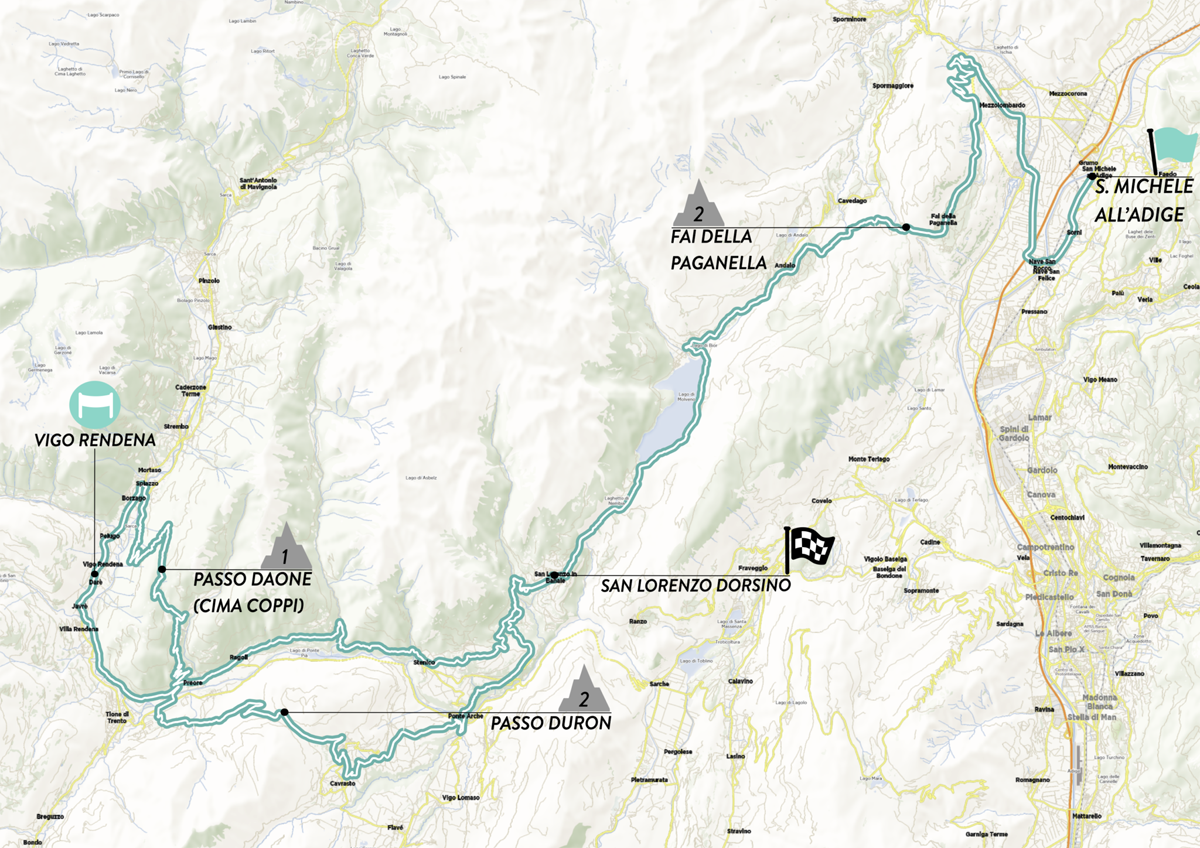
On the final day in the mountains, the Giro Donne heads into the Dolomites and what will be possibly the hardest day of climbing. As if going up in increments, stage 9 features three climbs including the Passo Doane, which will be the Cima Coppi, an accolade given to the highest mountain pass (not finish) in the race. As well as being high, the Passo Doane is a steep climb, averaging 10.9% over the 6.2km ascent. It’s the last climb in the stage, coming after the Fai della Paganella and the Passo Duron, both category 2 climbs that also top out at over 1,000m. The climbing starts early on stage 9, but then there’s 26km between the top of the Passo Doane and the finish line, so there will be time for the racing situation to change after the categorised climbing is complete.
If the rest of the stage wasn’t hard enough, the finale is a fairly rolling route and it’s an uphill kick to the line, making it a day for the really strong riders in the peloton, and a big test for already tired legs.
Not decisive, but still important
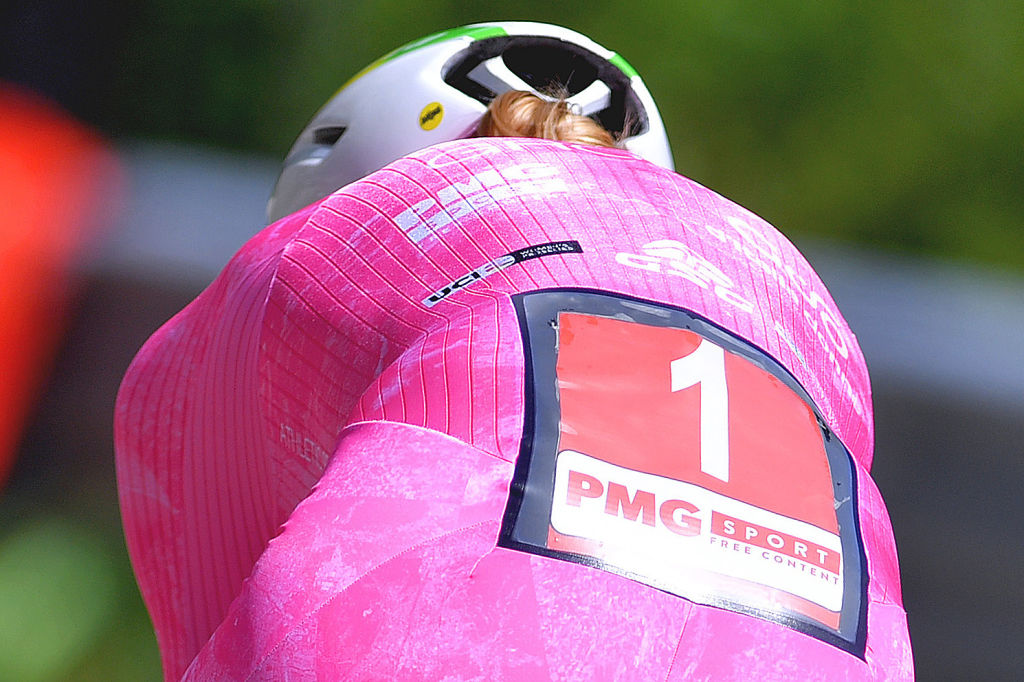
The three big mountain stages will almost certainly be what decides the general classification, but there are still plenty of stages with potential to cause gaps, and where the GC riders will have to be on high alert to who is up the road.
The mountains will be where the climbers take time, but these stages are where they run the risk of losing it.
Stage 1: Cagliari - Cagliari ITT (4.75km)
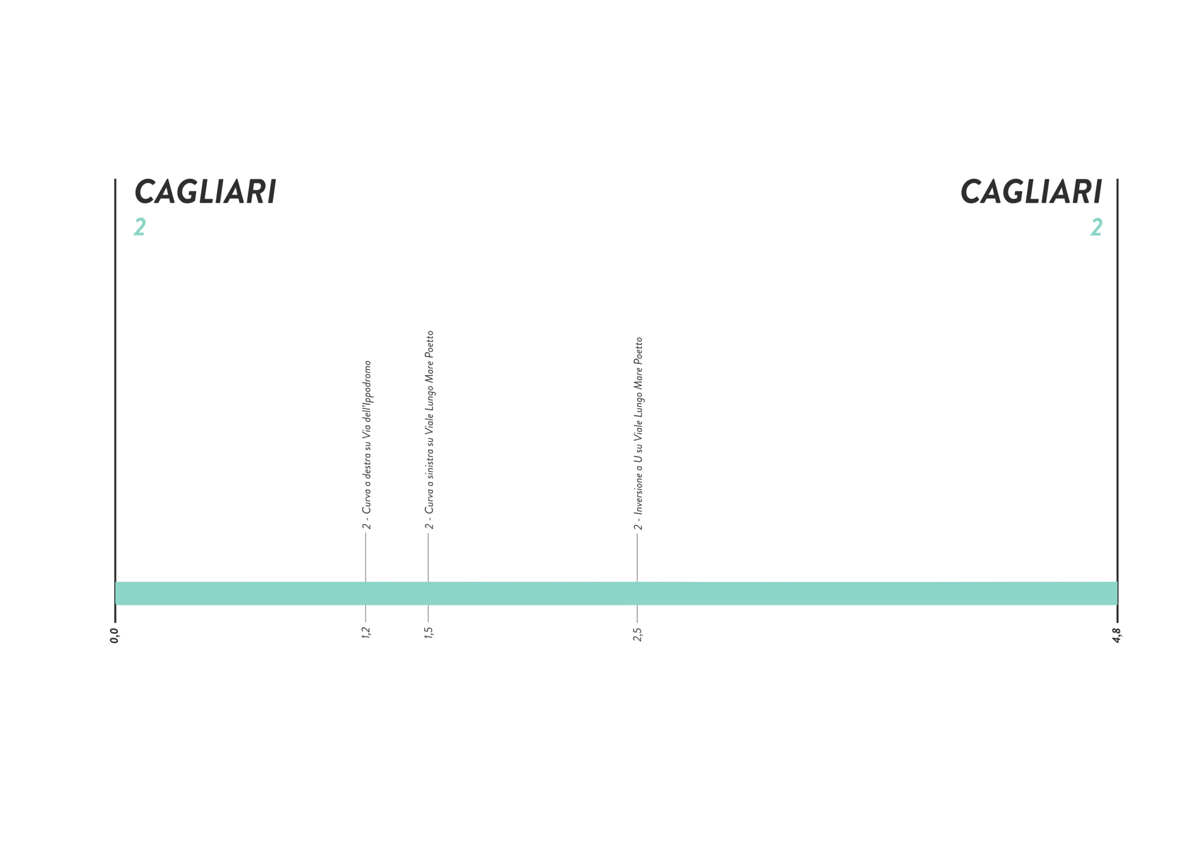
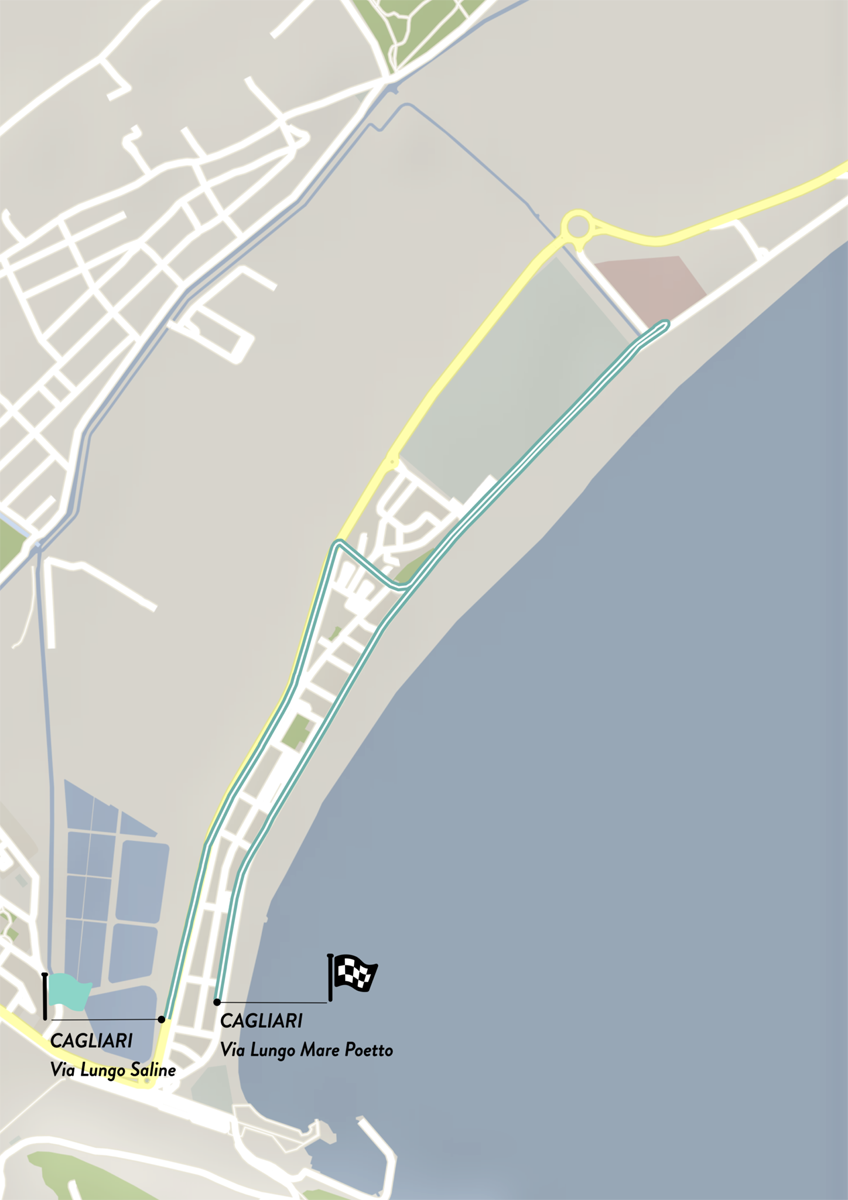
The Sardinia grande partenza starts with a 4.75km prologue in Cagliari, a port town in the south of the island. Being so short, there won’t be any major time gaps to worry about in terms of the overall, but the first leader’s jersey of the race will be up for grabs, and the standings will set the first hierarchy of general classification riders. It’s certainly not a day where anyone aiming for the overall will want to lose any chunk of time.
The course is completely flat, and uncomplicated: there are just three corners on the whole course, two 90 degree turns in the first 2km, before a hairpin which will turn the riders back around for a 2.3km straight run-in to the finish. The route hugs the coast, but with buildings separating the road and the sea for most of the course, the riders will be fairly protected from any sea breeze. The time trial should take somewhere between six and seven minutes to complete, and will be a day for powerful, fast riders – so could prove challenging for the more lightweight climbers.
Stage 4: Cesena - Cesena (120.9km)
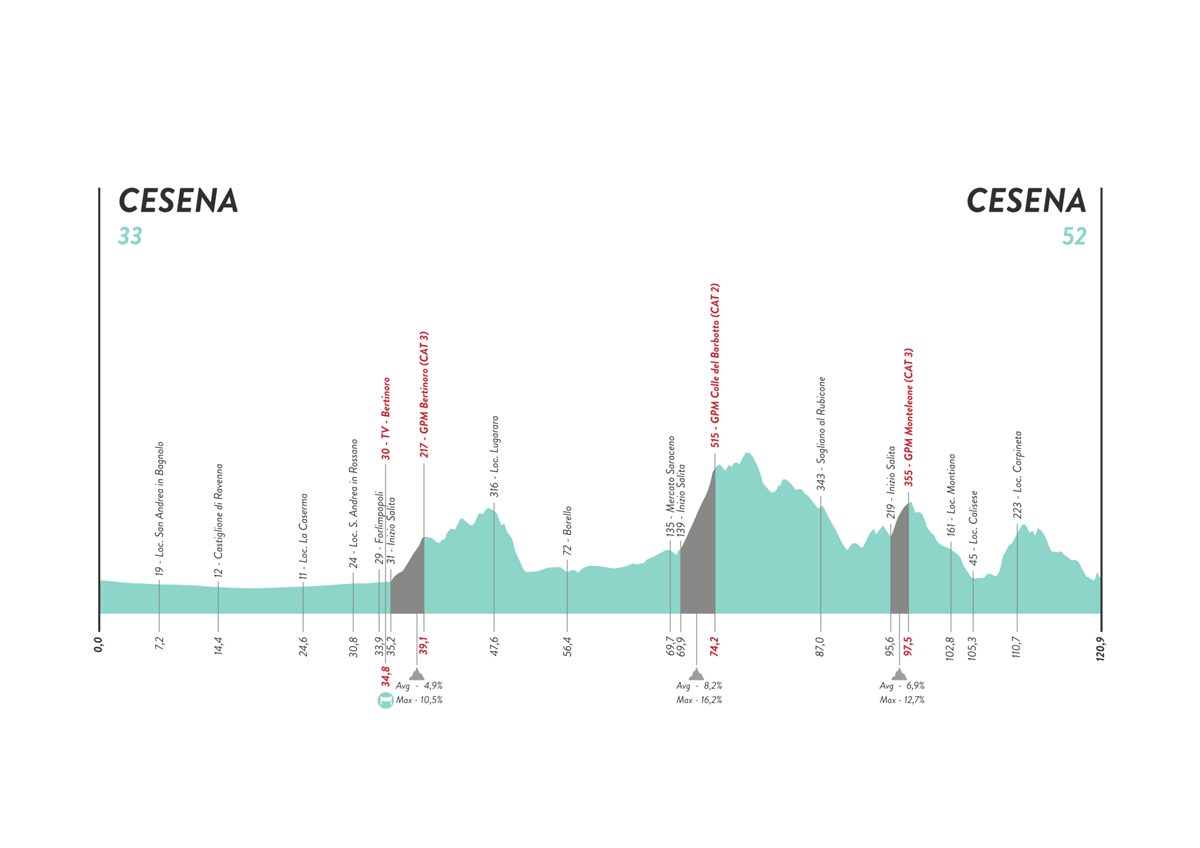
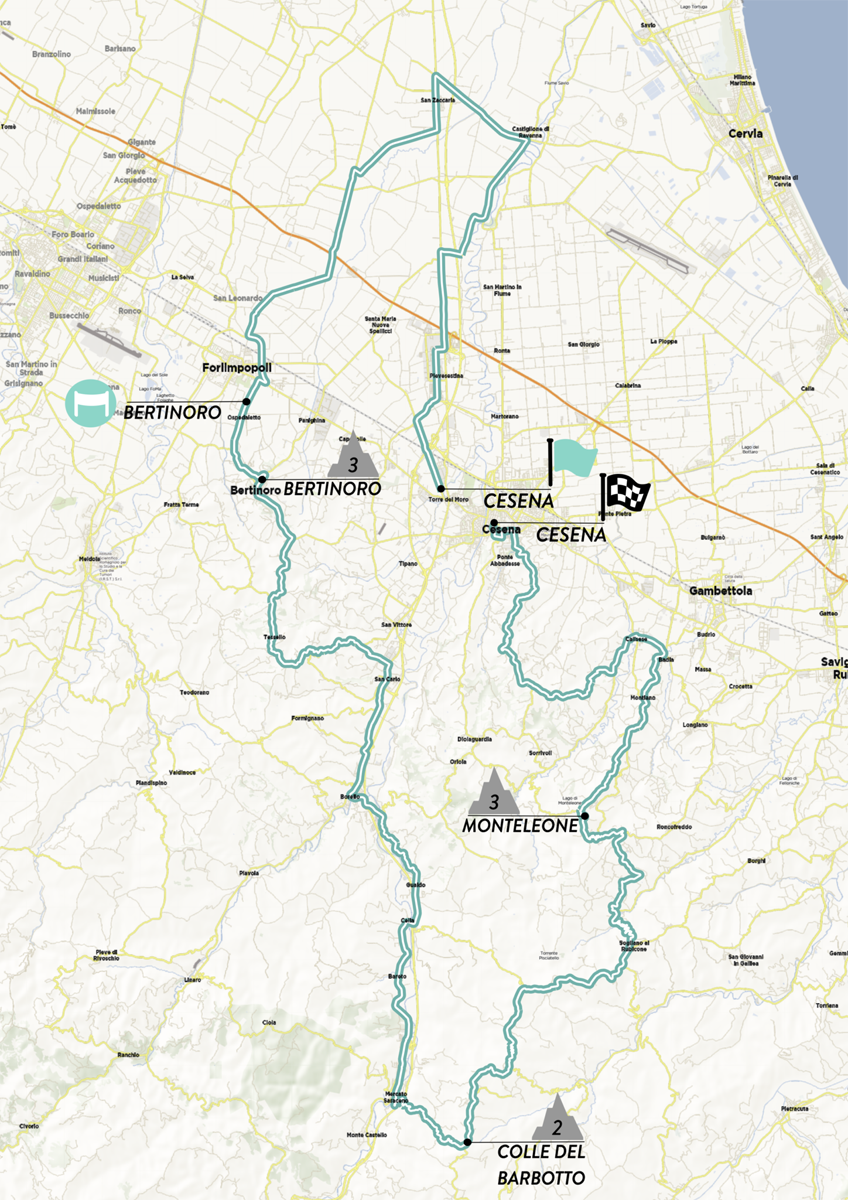
After an early travel day to transfer from Sardinia to the mainland, the peloton will be thrown straight back in at the deep end with the first properly hilly day of the race on stage 4. Starting and finishing in Cesena, the 120.9km route takes in three categorised climbs, plus one uncategorised but not insignificant clim in the final 12km. None of the climbs are particularly high - there are two category 3 and one category 2, with the highest peaking at 515m above sea level - but they are steep. The category 2 Collle de Barbotto comes 70km into the stage has an average gradient of 8.7%, with some sections as steep as 16.2%. Though the official climb is only 4.3km in length, the road steadily rises for a good 10km before the climb officially starts. Even after they cross the designated finish of the colle, the riders will still climb for around four more kilometres before the descent begins.
Being relatively early on in the race, the general classification riders may let a breakaway battle for victory on stage 4, but equally it could be an early opportunity for a rider to gain an advantage on the overall. It’s far from the most difficult climbing stage of the race, so should suit a larger number of riders as the pure climbers look to the bigger mountains still to come.
Stage 6: Sarnico - Bergamo (114.7km)
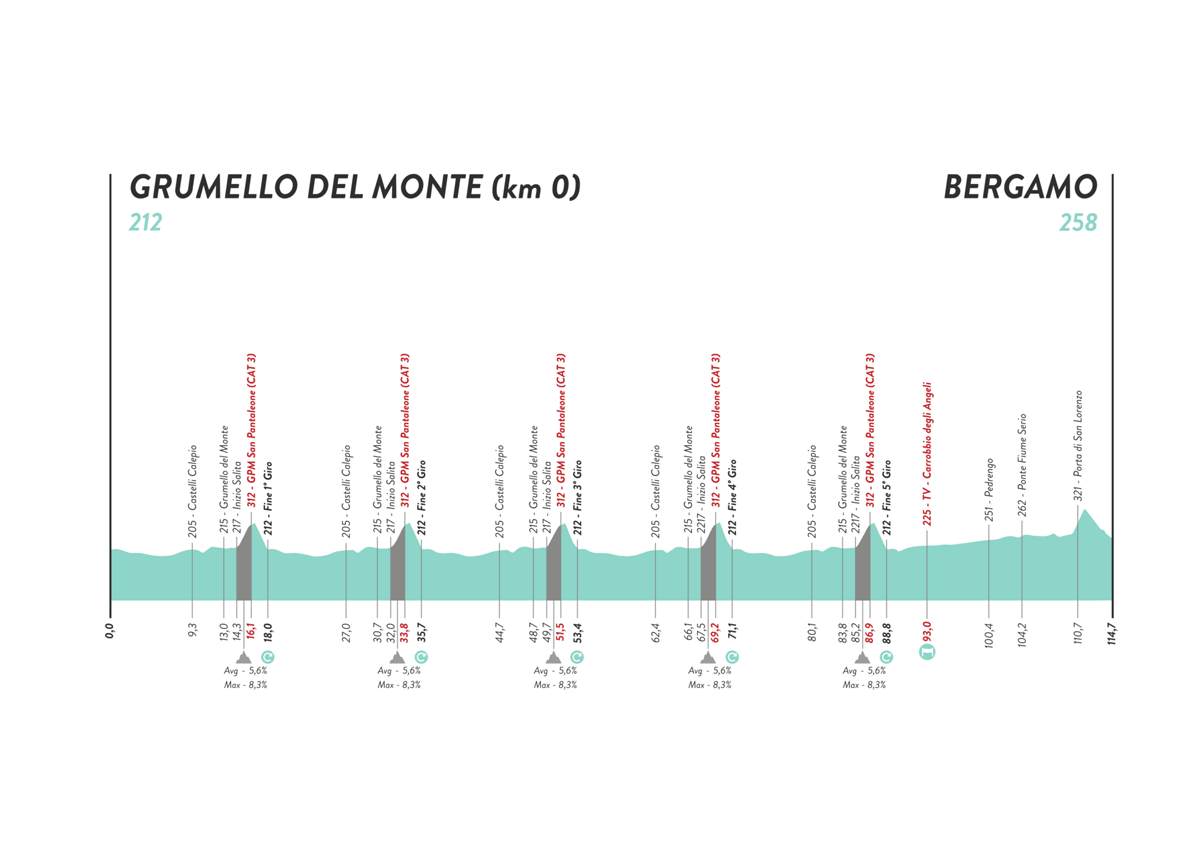
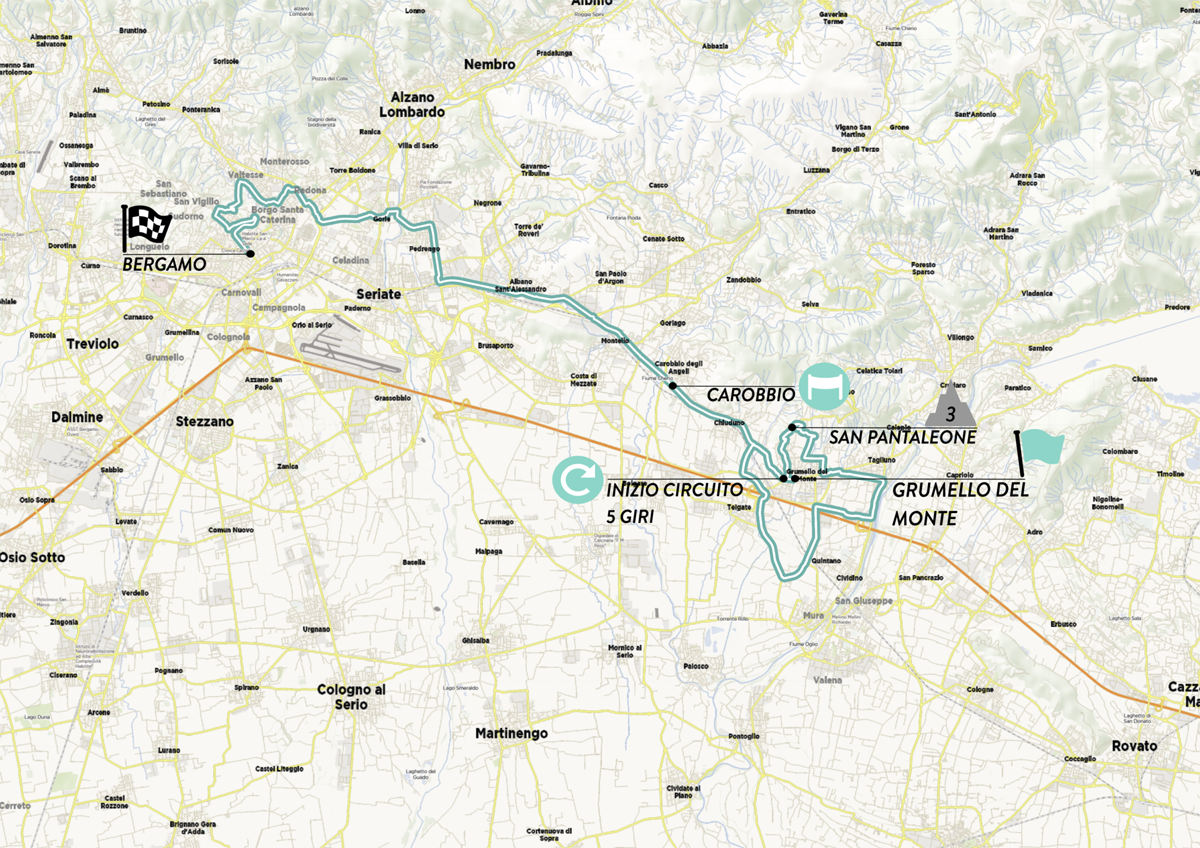
Stage 6 is something of a World Championships-type course, with five laps around Sarnico Grumello del Monte making up most of the stage, before a 26km run in to Bergamo. The 18km is somewhat technical with several 90 degree turns to contend with, and finishes on a short, punchy climb at San Pantaleone. The climb, which is category 3 with mountains points available at each ascent, is 1.6km long with an average gradient of 5.6%, but a peak of 8.3% in places. It’s not a climbers’ course, but should play into the abilities of the Classics riders over the pure sprinters, and it may be hard to bring back moves on the circuits.
Heading to Bergamo, the road is mainly flat but there is a sharp, uncategorised climb in the last 4km, and then it’s downhill to the finish line, so there could be chances for a punchy rider to make a move and they may be hard to bring back on the downhill finish. The general classification riders may want to save their energy before three big days of climbing, but will have to stay vigilant on stage 6 to any risky attacks and it wouldn’t be a surprise to see some overall contenders in the mix. Any rider who is caught out or loses time may find a deficit difficult to reverse going into the mountains.
Chances for the sprinters
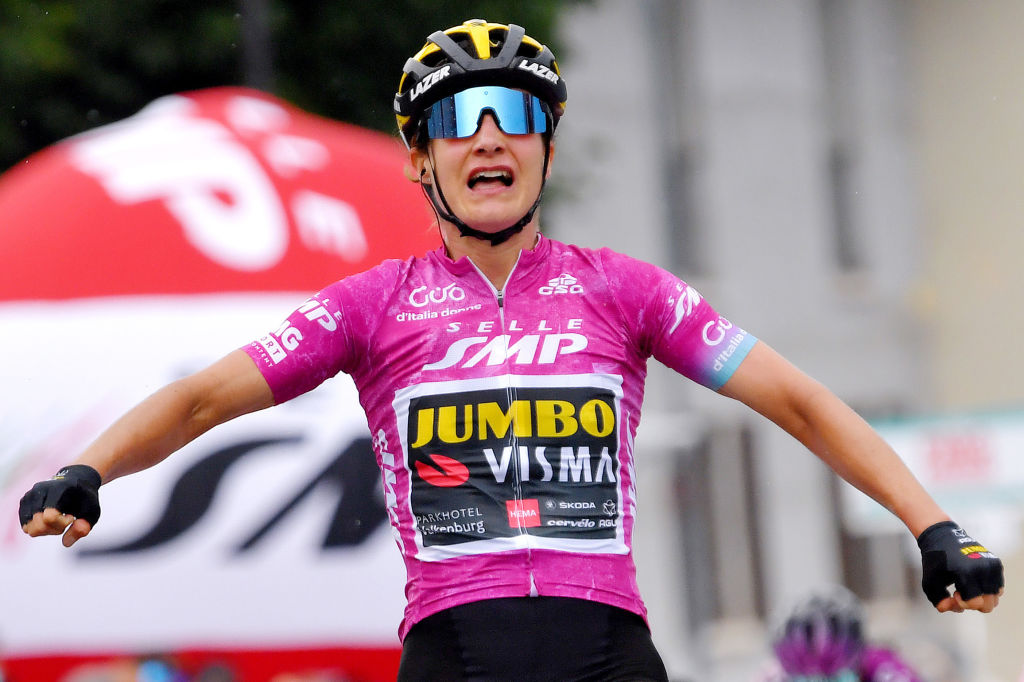
The big climbs and the tougher days will decide the overall, but the flatter days will be big targets for the sprinters and breakaway riders who want to win a stage in one of the most prestigious races on the calendar.
With the first yellow jersey of the Tour de France Femmes set to be awarded to a sprinter two weeks after the Giro Donne, the flatter days will also offer a chance for the fast riders to go head to head before Paris.
Stage 2: Villasimius - Tortoli (106.5km)
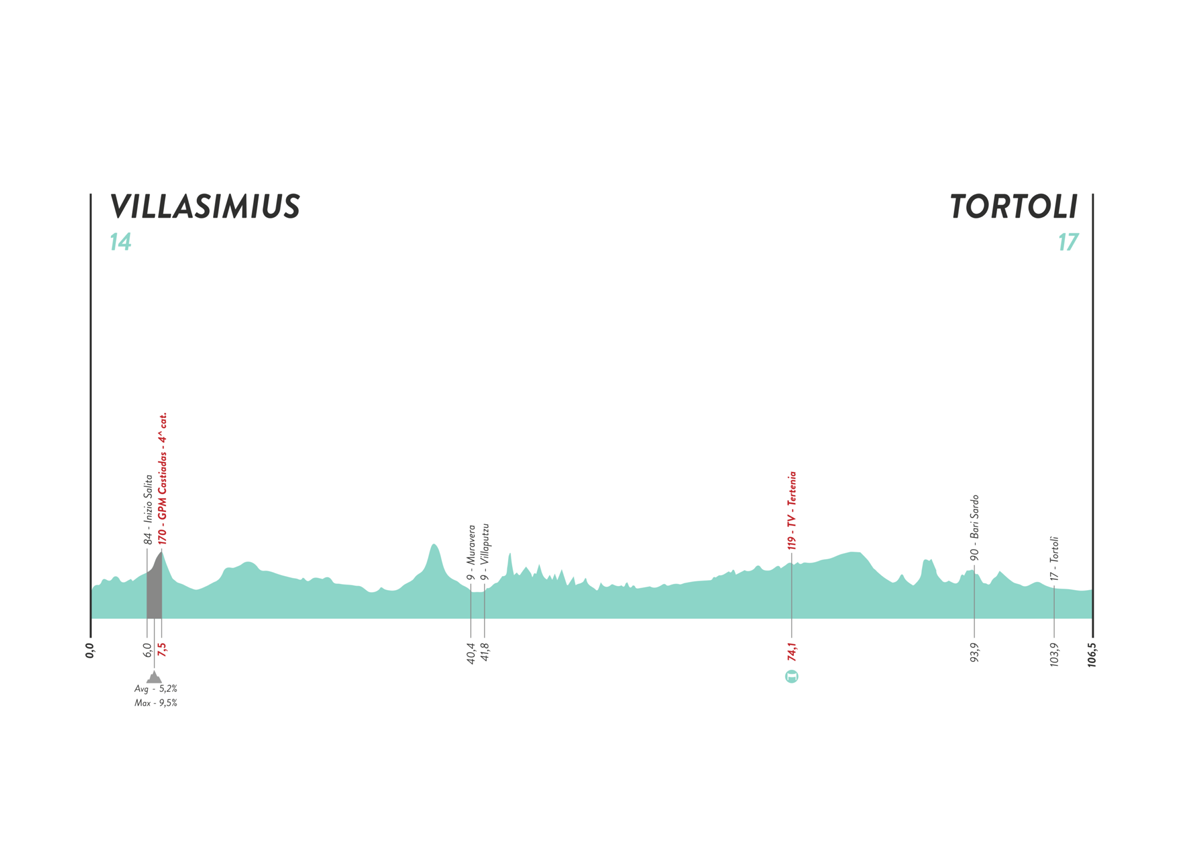
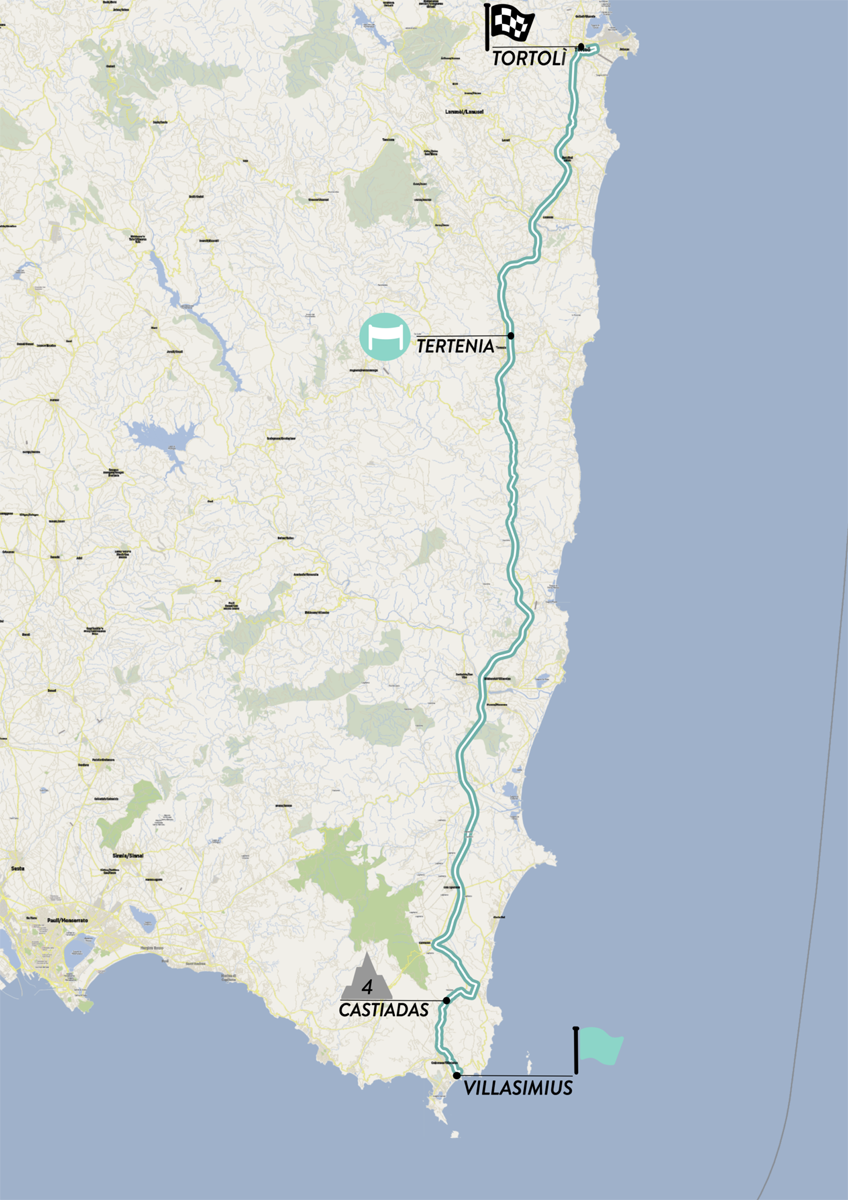
On stage 2, the race heads north along the eastern coast of Sardinia. Starting in the southeastern tip of the island in Villasimius, the route runs parallel to but inland from the coast towards Tortolì for a flat and fast finish in the centre of town. The island of Sardinia is made up of a lot of hilly terrain, but the roads of the grande partenza are largely in the flat valleys and cities, with just one categorised climb in the first three stages, falling on this second stage. The climb comes early on after just 6km of racing, so may be a launch pad for the day’s early breakaway, and will also decide who takes the green climber’s jersey back to mainland Italy.
After the prologue on stage 1, stage 2 should offer a chance for the sprinters, with the gently rolling parcours not enough to challenge most of the peloton’s fast riders. The finish in Tortolì is uncomplicated, with a very flat profile and a long final straight in the last kilometre.
Stage 3: Dorgali - Olbia (113.4km)
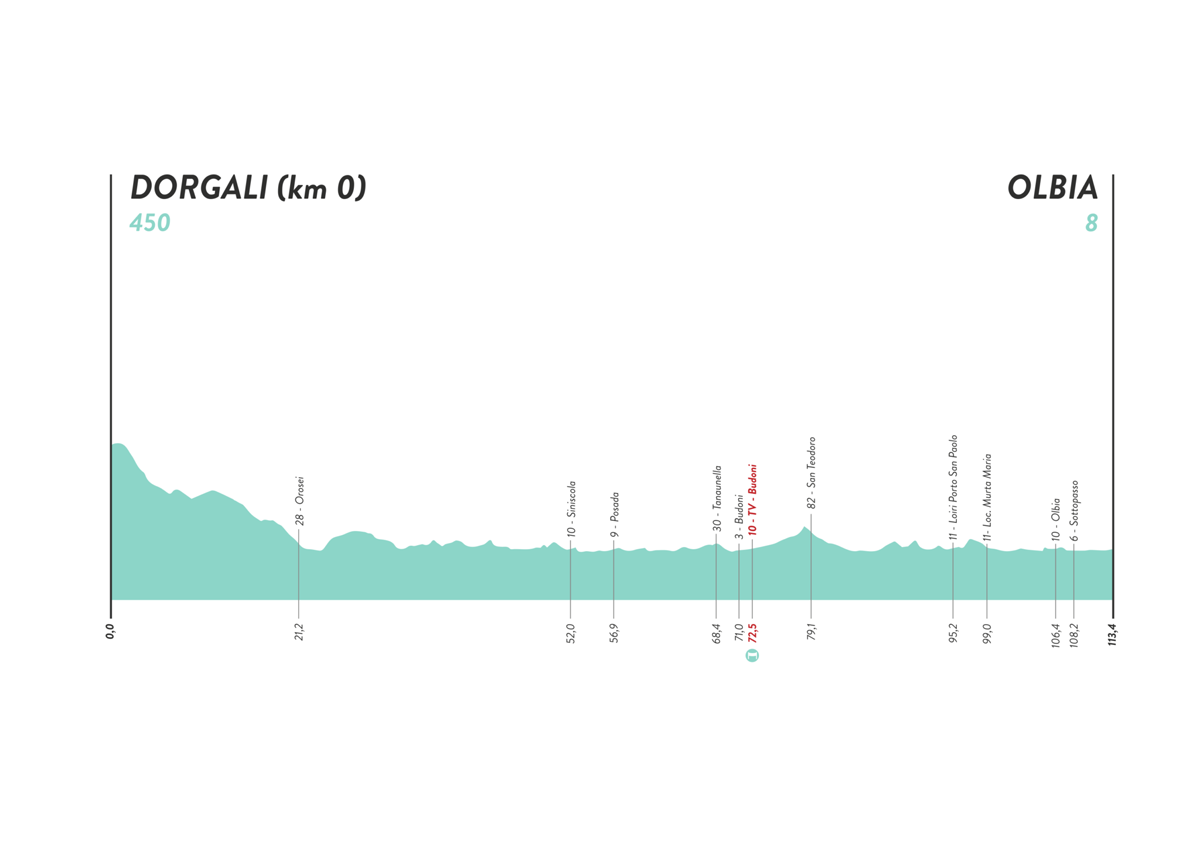
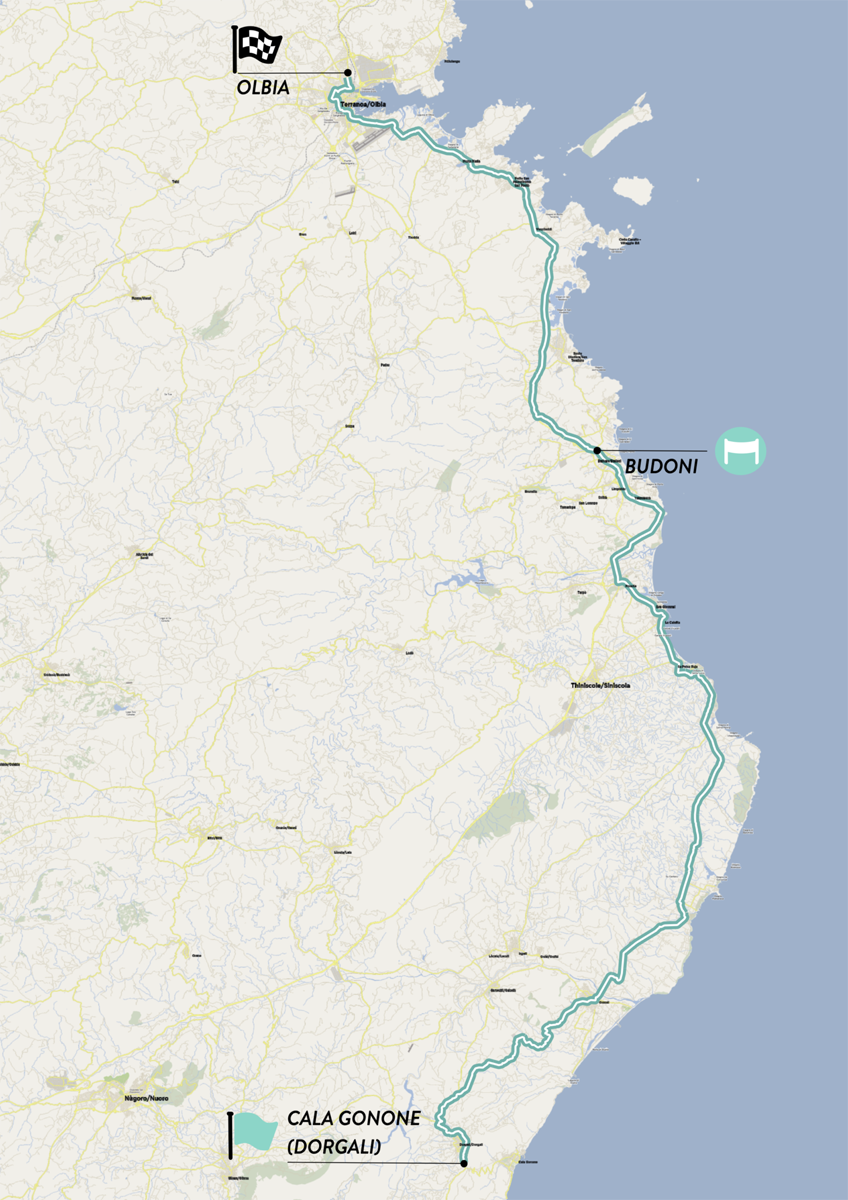
Continuing the journey north, stage 4 takes in 113km between Dorgali and Olbia, the second biggest city in Sardinia. The start town sits at 450m above sea level, and the stage will start with 21km of descending before a largely flat 90km towards Olbia. The fast, downhill start could be somewhat complicated for the peloton, and it may take a while for a breakaway to form, but the rest of the stage looks set for another sprint conclusion. However, hugging the coast more than stage 2, this stage could run the risk of some echelons in the most exposed sections and the peloton may not have a totally uncomplicated run into the finish.
Stage 5: Carpi - Reggio Emilia (126.1km)
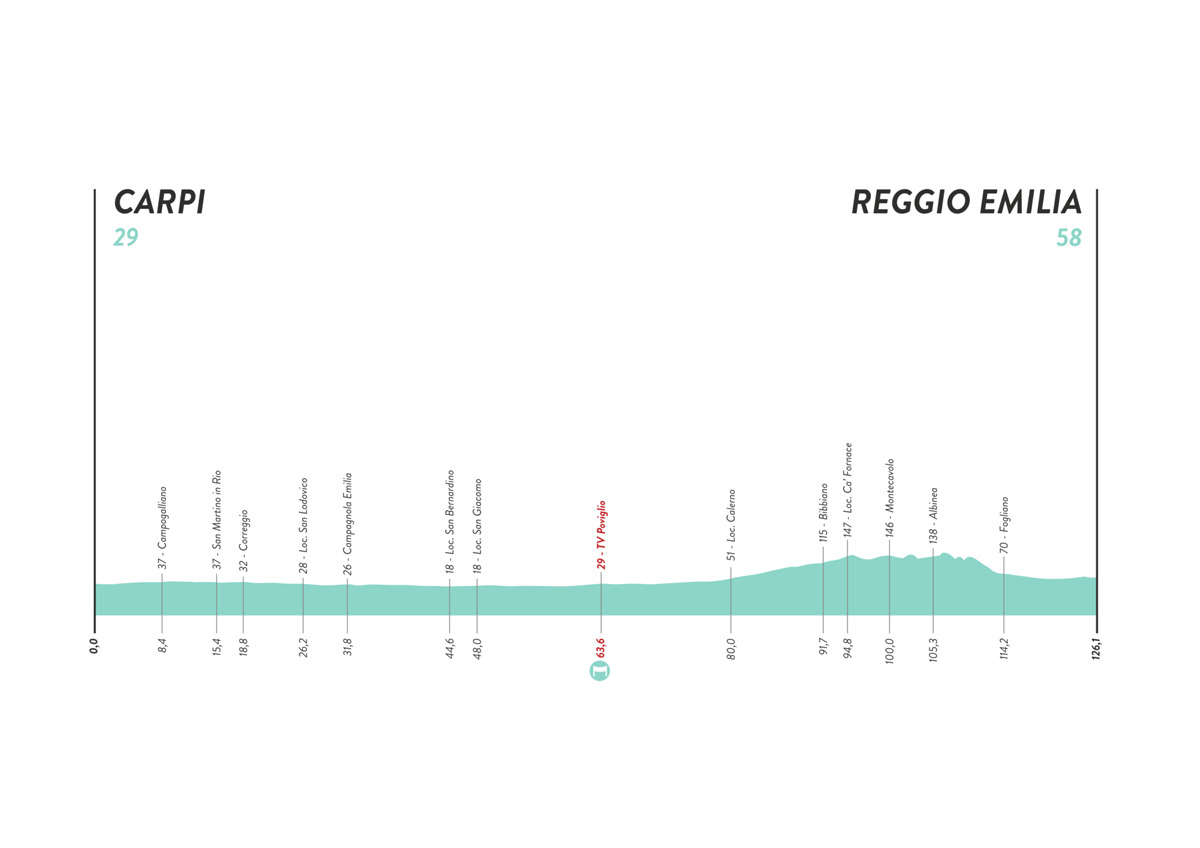
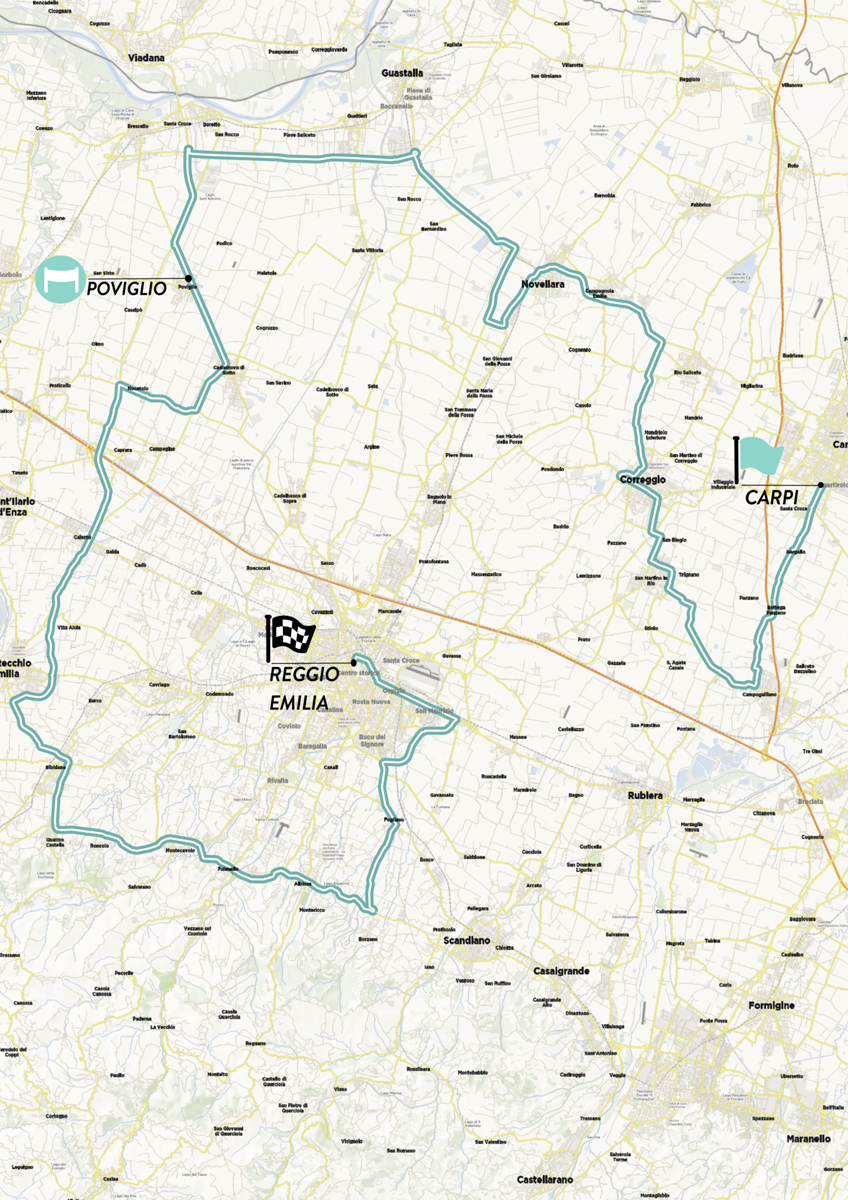
Stage 5 is perfect sprinters’ territory with a typically flat, mid-race stage between Carpi and Reggio Emilia. With not even a minor categorised climb to speak of, this should be a straightforward sprint stage. Finishing in the historic city of Reggio Emilia, the narrow roads may make for a somewhat technical finish and positioning will be key. The sprinters will know it's the last properly flat stage before the final stage on Sunday, so the competition will be fierce, especially for any of the sprinters who haven’t yet taken a victory at the race.
Stage 10: Abano Terme - Padova (90.5km)
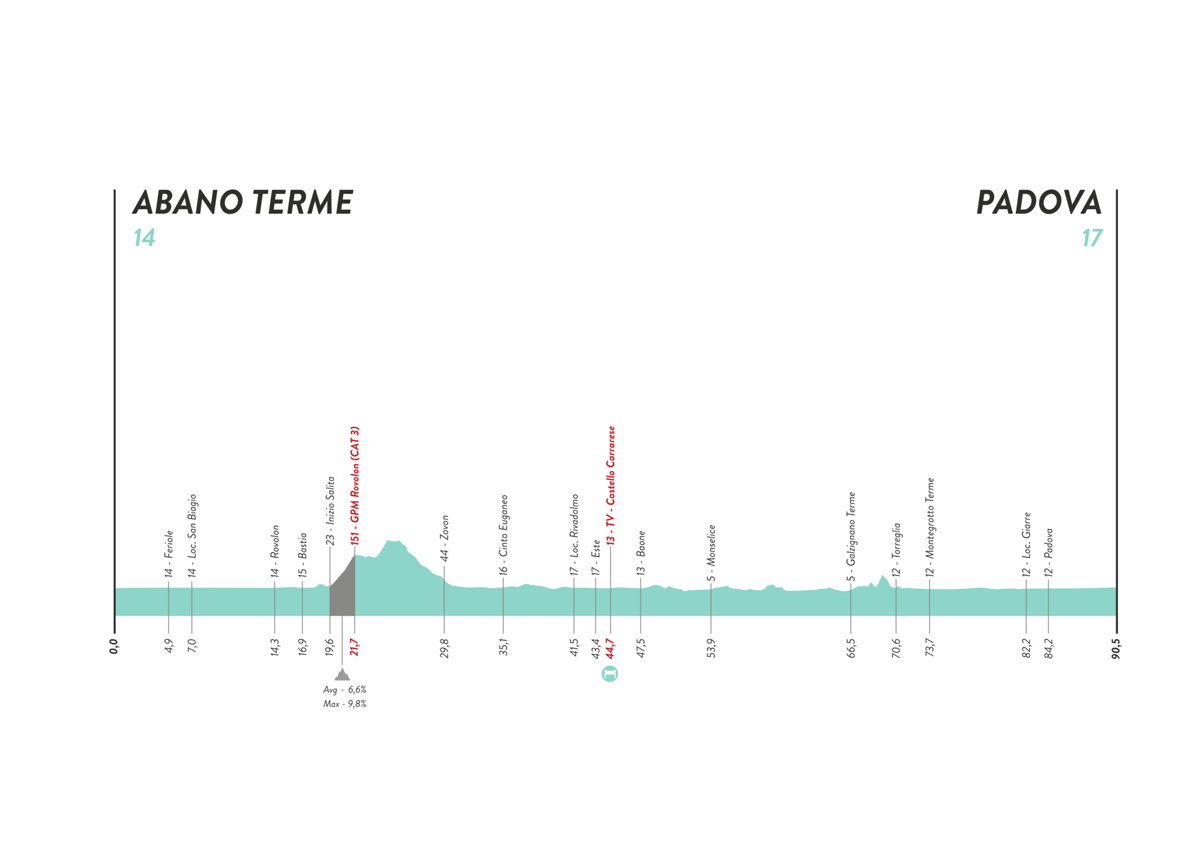
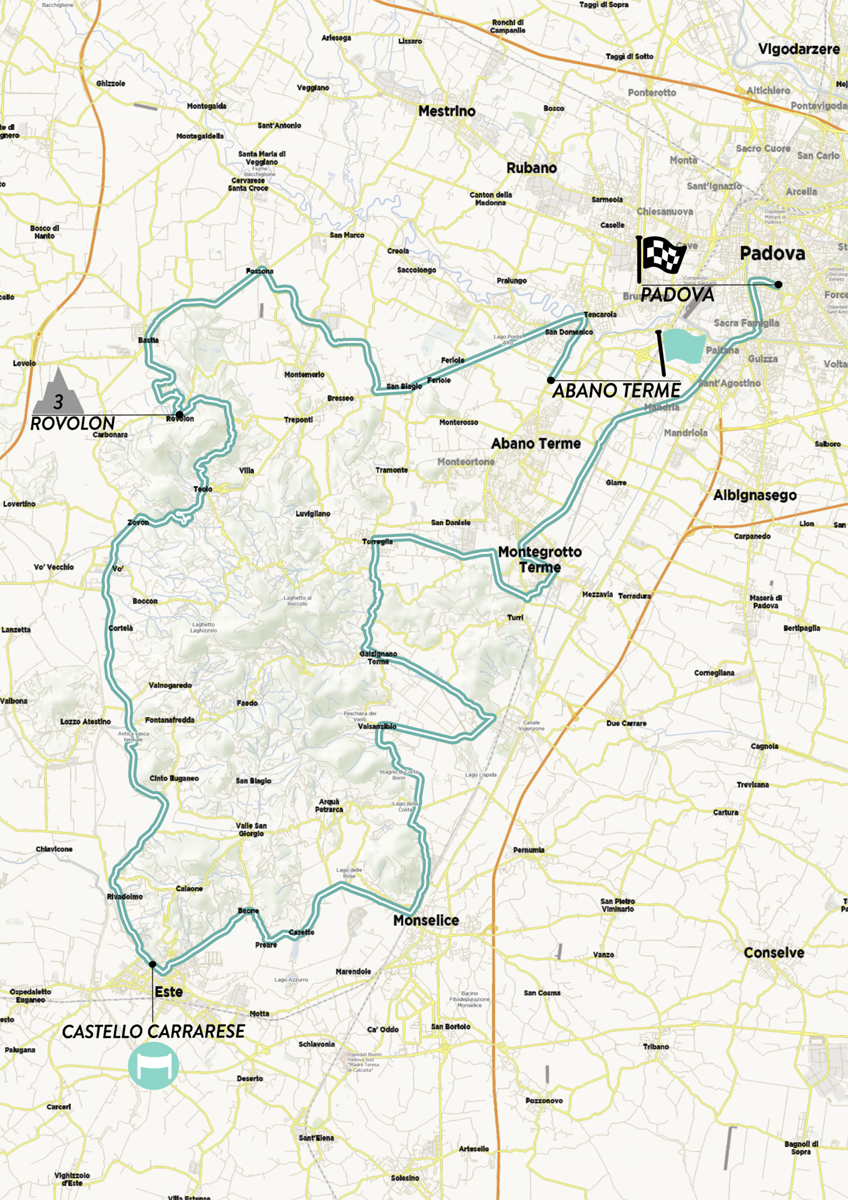
By stage 10, all the significant climbing and GC racing will be wrapped up and there’s just one climb to contend with on the otherwise flat final stage. If by some surprising turn of events the overall is not definitively decided after three big days of climbing, there may be some attacking racing on stage 10, but the likelihood is high that this will be a straightforward sprint day with just a final win and perhaps the sprinter’s jersey to be decided. The sprinters will have to make it to Abano Terme first, though, and it may be a slightly reduced field that finishes the race after a tough ten stages.
Get The Leadout Newsletter
The latest race content, interviews, features, reviews and expert buying guides, direct to your inbox!
Matilda is an NCTJ-qualified journalist based in the UK who joined Cyclingnews in March 2025. Prior to that, she worked as the Racing News Editor at GCN, and extensively as a freelancer contributing to Cyclingnews, Cycling Weekly, Velo, Rouleur, Escape Collective, Red Bull and more. She has reported from many of the biggest events on the calendar, including the Giro d'Italia, Tour de France Femmes, Tour of Flanders and Paris-Roubaix. She has particular experience and expertise in women's cycling, and women's sport in general. She is a graduate of modern languages and sports journalism.
Latest on Cyclingnews
-
For the love of Paris-Roubaix – Girmay, Dygert and every Hell of the North finisher emotional after making it to the velodrome
'I have pain everywhere but it's a beautiful race' says Biniam Girmay as he achieves best-ever finish for an African male rider -
Sean Kelly's Classics Column: Only a mistake cost Tadej Pogačar in Paris-Roubaix – he'll be back to win soon
The nine-time Monument winner reflects on Van der Poel's win, a costly mistake from Pogačar, and what Ferrand-Prévot's win means for the rest of the season -
Best bike brands: Bicycle companies we trust
The bike brands we rate highly at Cyclingnews and a guide to available marques -
Paris-Roubaix medical updates – From fractures for Ballerini and a bloodied face for Küng to lucky escapes for Theuns and Ferguson
The accumulating injury reports from a brutal weekend of racing at the Hell of the North
